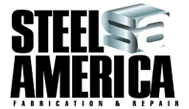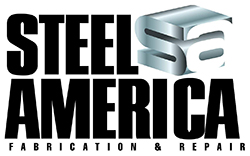BACK TO BASICS: NON-DESTRUCTIVE TESTING (NDT)
According to The American Society for Nondestructive Testing (ASNT), nondestructive testing (also known as NDT) is “the process of inspecting, testing, or evaluating materials, components or assemblies for discontinuities, or differences in characteristics without destroying the serviceability of the part or system.” While there are over a dozen different types of NDT in the industrial world, Steel America currently performs four in house. Our certified inspectors perform Magnetic Particle Testing (MT), Liquid Penetrant Testing (PT), Ultrasonic Testing (UT), and Visual Testing (VT). Each process is unique in its own way, and is essential to ensuring good quality workmanship.
The most commonly used NDT procedure at Steel America is Magnetic Particle Testing (MT).
Magnetic Particle Testing can be broken down into 6 easy-to-follow steps:
- Clean the surface to be examined. This can be accomplished using detergents, organic solvents, descaling solutions, paint removers, vapor degreasing, sand or grit blasting, or ultrasonic cleaning methods.
- Introduce a magnetic field into the part.
- Apply the ferromagnetic medium (MT Powder) while the part is magnetized.
- Remove excess ferromagnetic medium with a light air stream from a bulb, syringe, or other source of low-pressure dry air.
- Interpret and evaluate any indications to the applicable acceptance standard.
- Turn the yoke 90 degrees from the original position and repeat steps 2-5. Clean and demagnetize if necessary.

Advantages:
- Can detect both surface and near-surface indications.
- Surface preparation is not as critical compared to other NDE methods.
- A relatively fast method of examination.
- Indications are visible directly on the surface.
- Low-cost in comparison to other NDT methods.
- A portable NDT method, especially when used with battery-powered yoke equipment.
- Post-cleaning generally not necessary.
- A relatively safe technique; materials generally not combustible or hazardous.
- Indications can show relative size and shape of the discontinuity.
- Easy to use and requires minimal amount of training.
Disadvantages:
- Non-ferrous materials, such as aluminum, magnesium, or most stainless steels, cannot be inspected.
- Examination of large parts may require use of equipment with special power requirements.
- May require removal of coating or plating to achieve desired sensitivity
- Limited subsurface discontinuity detection capabilities
- Alignment between magnetic flux and indications is important.
- Each part needs to be examined in two different directions.
- Only small sections or small parts can be examined at one time.


